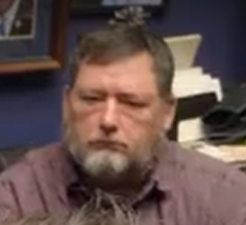
Paul Hayes
is a retired software engineer. He has worked for Rockwell Collins, ITT’s Aerospace Communications Division, and currently is self-employed as sole owner and Managing Member of Hudson Bay Wireless LLC. He is also an avid activist for small inventors.

Recent Articles by Paul Hayes
In Article 1, Section 8, Clause 8, of our Constitution, the founders were relatively specific. The founders give Congress power to secure “the exclusive Right” to “Authors and Inventors” in the “Writings and Discoveries”. Congress is given specific direction on how to do it (i.e., “for Limited Times”), and why it should be done (i.e., “To promote the Progress of Science and useful Arts”). Unfortunately, the Leahy-Smith America Invents Act (AIA) of 2011 dramatically changed how the Executive branch implements the Constitutional prerogative. The AIA transferred power constitutionally allocated to the judicial branch to the executive branch – specifically, to Administrative Patent Judges (APJs) in the USPTO. In the process of implementing the Patent Trial and Appeals Board (PTAB) on which the APJs sit, judicial independence, judicial ethics, rules of evidence, and other protections commonly afforded rights holders in disputes adjudicated by the federal judiciary were sacrificed in the name of expediency.
Whoever wrote the America Invents Act (AIA) left out the U.S. Patent and Trademark Office (USPTO) examiners. The examiner on any given patent at issue in an inter partes review (IPR) proceeding at the Patent Trial and Appeal Board (PTAB) agreed with the patent holder that the patent claims, as amended, were valid. Examiners are specialists, working under Supervisory Patent Examiners (SPEs), who are even more experienced, though in very narrow fields. As such, they knew the state of the art at the time a patent was being prosecuted.

![[IPWatchdog Logo]](https://ipwatchdog.com/wp-content/themes/IPWatchdog%20-%202023/assets/images/temp/logo-small@2x.png)